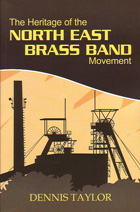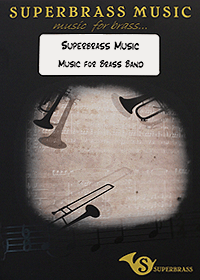Book Review - The Heritage of the North East Brass Band Movement
8-Jul-2008Dennis Taylor looks back at the proud heritage of one of the real hot beds of the brass band movement in the UK.
 Author: Dennis Taylor
Author: Dennis Taylor
4BR Shopping:
http://www.4barsrest.com/gallery/shop/b016.jpg
Dennis Taylor is a well respected brass band musician and former music teacher who has been involved in the brass band movement for over 70 years. He is also an Honorary Research Fellow attached to the Music Department of the University of Durham.
In that role he has produced this enjoyable labour of love, tracing the development and subsequent history of the brass band movement in his beloved North East, from its very earliest beginning to the present day with stops to look at various aspects of banding culture in the area.
Shadow of former self
Today the North East banding movement is but a shadow of its former self, perhaps the one major industrialised area of the country where brass band music making has suffered its greatest decline.
The social and political reasons for that are not explored in depth here, as the book is geared more towards a celebration almost of the heritage and legacy that the movement has left. However, the list of bands that Dennis has unearthed that once flourished and are now no more is as fascinating as it is depressing: From the Albert Edward Operatic Band to Deafhill Colliery, Mickley Tyndale Temperance Band to Wallsend Rising Sun Band – all great names and now, sadly, all just entries in the brass band obituary ledger.
The apex of North East banding came prior to the Second World War when the famous St Hilda Colliery Band was without doubt the finest band in the world.
Standard bearers
They were not the sole standard bearers for the region though, and Dennis’s research unearths the names of the now almost totally forgotten Harton Colliery, winners of the British Open in 1919, Marsden Colliery, winners of the National in 1925 as well as Redcar Works, Blackhall Colliery and Consett Iron Co & Crookhall, Brancepeth Colliery, all of whom won the Grand Shield or Senior Cup before 1939.
The post war decline can also been seen in black and white too, with the list of competitors from the region taking part at both the British Open and National Finals gaining little or no further success in subsequent years. The letters U/P (unplaced) appear with almost monotonous regularity after their names from 1945 to date.
Elsewhere the book does touch on subject matter that has been covered in greater depth in other publications, with the chapters on the development of brass instruments, music for varied occasions and Salvation Army banding and its music, broad appreciations rather than in depth analysis.
The chapters on brass personalities from the area and famous regional bands is of much more interest however, as too are the lovingly researched lists of former bands and contest results.
If there is a major weaknesses in the book however it is the standard of the proof reading and editing, which at times is not as good as you would expect. It does detract at times from your enjoyment of a much needed publication, and one whose proceeds go to the greater good with the work of Brass Band Aid.
Iwan Fox









